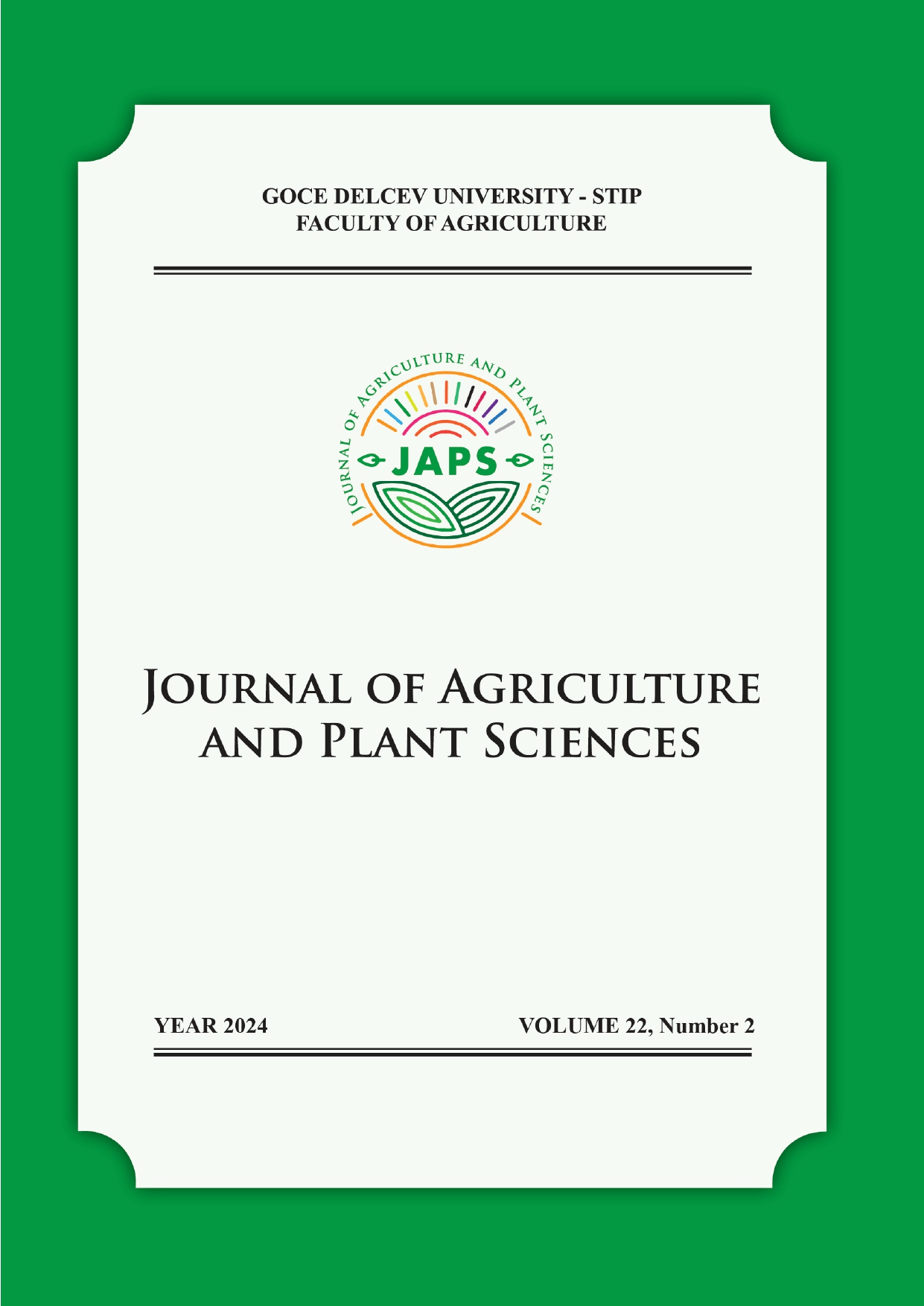YIELD AND YIELD COMPONENTS IN SOME WHEAT VARIETIES (Triticum aestivum L.) GROWN IN KOCANI REGION
DOI:
https://doi.org/10.46763/JAPS2422245mAbstract
The purpose of this research was to study the yield and yield components in seven wheat varieties grown under the soil-climatic conditions of Kochani region. As an experimental material were used six introduced varieties (Rajna, Igra, Epoha, Falado, Grivna and Pobeda) and one domestic variety (Mila). The field trial was conducted in 2022/23 growing season, in randomized block design with three replications. The grain yield, plant height, spike length, number of spikelets per spike, number of grains per spike, grains weight per spike, weight of 1000 grains, number of spikes per m2 and the biological yield were analyzed. Analysis of variance showed high genetic variability and significant differences between the examined varieties for all studied properties. The highest average grain yield was obtained by Falado variety (0,68 kg/m2). Also, this variety showed the highest average value for the grains weight per spike (2,49 g), weight of 1000 grains (43,0 g) and biological yield (3,1 kg/m2). The variety Falado was followed by Grivna variety which had the highest value for number of spikes per m2 (1380 spike per m2) and number of grains per spike (64,86).
High values of genotypic and phenotypic coefficients of variation (GCV and PCV) were noted for grain yield, biological yield, grains weight per spike, number of grains per spike, spike length, which indicate high variability between tested genotypes. All examined traits showed high heritability. The grain yield was in positive significant correlation with grains weight per spike (r=0,928) and number of grains per spike (r=0,793).
High values of genotypic and phenotypic coefficients of variation (GCV and PCV) were noted for grain yield, biological yield, grains weight per spike, number of grains per spike, spike length, which indicate high variability between tested genotypes. All examined traits showed high heritability. The grain yield was in positive significant correlation with grains weight per spike (r=0,928) and number of grains per spike (r=0,793).
Downloads
Published
Issue
Section
License
The intellectual property and copyright on the original content of all scientific contributions in the published paper shall remain with the authors. Authors give permission to the JAPS owner to publish the paper. All authors agree to publish the paper under Attribution-NonCommercial-NoDerivatives 4.0 International license (CC BY-NC-ND 4.0).

